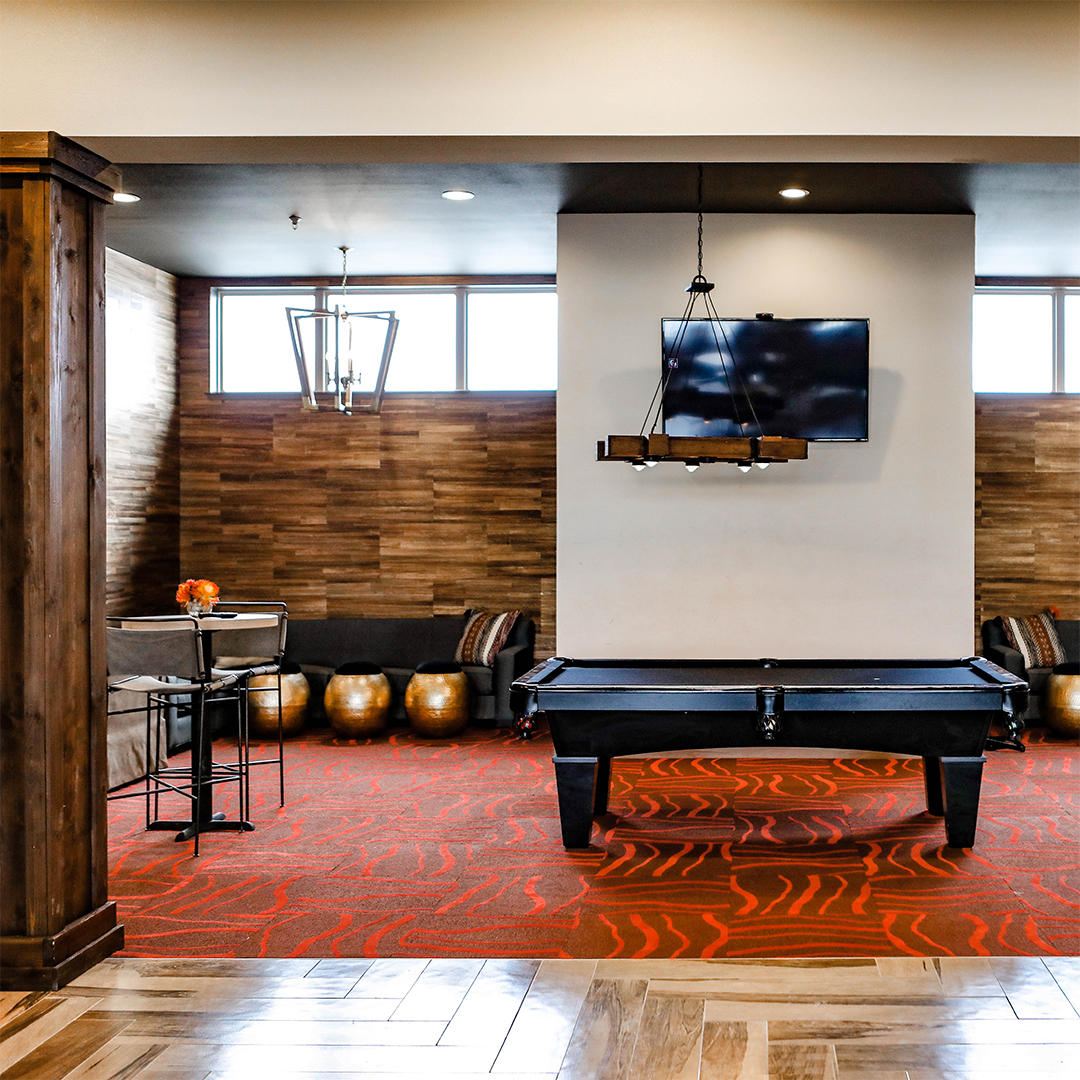Multifamily Wall Design Trends
Jun 7, 2017
The artist M.C. Escher once asked, “Are you really sure that a floor can’t also be a ceiling?” Such a question leaves a lot to think about when it comes to interior design. Perhaps as it relates to floor coverings, the answer is yes. But what about the transitional sweet spots we fondly refer to as, “the walls”? Walls certainly provide a blank canvas for interior designers to create the ideal vibe. By leveraging multifamily wall design trends, designers keep property developers on-track with their ideal demographics.

As interior designers, we have industry insights into materials and finishes that are influenced by new technologies and fashion. Our favorite multifamily wall designs are always the ones that stand the test of time.

Tile
Tiles are made of a variety of materials, such as ceramic, marble, slate, porcelain, travertine, glass, and even mirror. Probably the most common of these are porcelain and stone, which are major players in the flooring field. The classical patterns of squares, rectangles, and hexagons can add a timeless elegance in any setting. As an illustration, ceramic subway tiles have surged in popularity as a multifamily wall design trend. But the most significant innovations in tile have come in the form of modular, irregular shapes, and 3-D textures. These tile trends are literally breaking the mold of traditional tile shapes and forms.

Patterns and Structure
Given these points, one of the most significant and time-tested design expressions of tile is using it to form a pattern or mosaic. Similarly, ceramic herringbone patterns in trending colors or varying sized rough-hewed, natural stone tiles are examples of modern multifamily accent wall designs.

Brick
The timeless appeal of brick still ranks high on the scale of multifamily wall design trends. With a passion for urban ambiance, developers and interior designers alike have embraced the architectural charm of brick. Interior brickwork fits very well with midcentury modern style and other current multifamily couture.

Wood
Remember the large panels of wood paneling that was so common in the 1970’s? Just forget them, this is different. Wood is back, and it’s hip. In like manner, wood wall accent designs are available in tiles, slats, and panels. By all means, wood adds character, depth, and warmth to a room. Today’s accent wall trends use wood with innovative shapes and exotic, rustic, or weathered finishes. Plus, many new wood products are made using sustainable manufacturing processes.

Paper and Fabric
Wallpaper isn’t necessarily “paper” anymore. Moreover, as a multifamily wall design trend, it’s supernova hot. Vinyl, fabric, or grasscloth wallcoverings available now are stunning ways to highlight a clubroom, cyber lounge, corridor, or leasing office wall. From hombre fades to sublime textures, the possibilities that exist are endless. Uniquely, one trend we are seeing a resurgence of is murals. Murals can be a custom creation that adds relevancy to your project’s locale or branding. For this reason, wallcoverings borderline on being an architectural element, rather than just a fancy way to hide sheetrock. Like wood products, many papers are sustainable products and can contribute to a variety of LEED credits.

Paint
Lest we forget our old faithful friend, paint. By all means, paint is the most common wall design accent. Sure, paint can make a statement, with bold colors or even stripes. That said, the paint trends we are seeing for today and tomorrow are light and simple. Think neutral colors. Subtle grays are the new white with an occasional beige thrown into the mix; even delicate metallics can be found in some sophisticated mixes.

Multifamily Wall Design Trends and Benefits
Ultimately, to survive in today’s highly competitive multifamily market; your interiors have to stand out. It’s not just about implementing one or more of the trends mentioned above, it’s understanding how they fit your project’s story. To fully take advantage of the multifamily wall design trends that are best for you and your project, hire an interior design group. In the long run, they can help you implement the ideal look for your demographics, while keeping your development on-trend for tomorrow.
